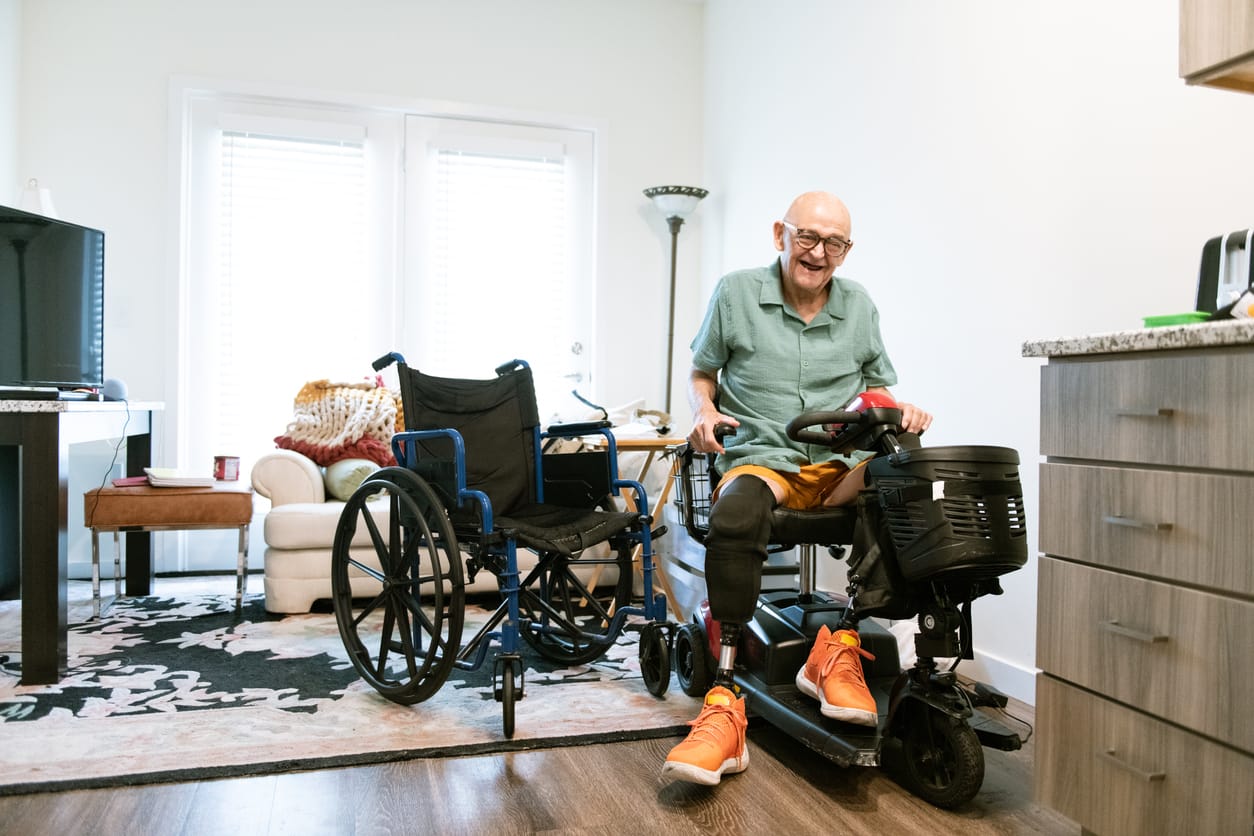Assessing the current living space of our elderly loved ones is crucial to creating a safe and supportive environment tailored to their needs. Conducting a thorough home safety assessment involves careful consideration and proactive planning to identify and mitigate potential hazards.
1. Start with a Walkthrough
- Survey Each Room: Begin with a walkthrough of the entire home, paying attention to each room and its specific safety needs. Take notes of potential hazards and areas that require modification.
2. Check for Fall Hazards
- Remove Clutter: Ensure pathways are clear of clutter, loose rugs, and electrical cords that could cause trips or falls.
- Secure Rugs: Use non-slip pads under rugs or remove them altogether to prevent slipping.
- Install Grab Bars: Place grab bars in the bathroom near the toilet and inside the shower or bathtub to provide support.
- Ensure Good Lighting: Install adequate lighting, especially in hallways, staircases, and entryways. Use night lights in bedrooms and bathrooms.
- Stair Safety: Make sure staircases have sturdy handrails on both sides, and steps are well-lit and free of objects. Consider adding non-slip treads.
3. Evaluate Bathroom Safety
- Non-Slip Mats: Use non-slip mats inside and outside the shower or bathtub.
- Shower Chair: Consider a shower chair or bench for those who have difficulty standing for long periods.
- Handheld Showerhead: Install a handheld showerhead to make bathing easier and safer.
- Raised Toilet Seat: A raised toilet seat with armrests can help seniors sit and stand more easily.
4. Examine the Kitchen
- Organize Items: Keep frequently used items within easy reach to avoid the need for climbing or bending.
- Appliance Safety: Check that all appliances are in good working order and easy to use. Consider installing automatic shut-off devices for stoves.
- Fire Extinguisher: Ensure there is a working fire extinguisher easily accessible in the kitchen.
5. Assess Bedroom Safety
- Bed Height: Ensure the bed is at a safe height, making it easy to get in and out of. Consider a bed rail for additional support.
- Phone Access: Keep a phone within reach of the bed in case of emergencies.
- Emergency Response System: Consider installing a personal emergency response system (PERS) for immediate help if needed.
6. Living Room and Common Areas
- Furniture Placement: Arrange furniture to allow for easy movement and eliminate sharp corners or unstable pieces.
- Secured Carpets: Ensure carpets and rugs are secured to the floor to prevent trips.
- Stable Seating: Choose chairs with armrests and a stable base for easier sitting and standing.
7. Check Doors and Windows
- Ease of Use: Make sure all doors and windows open and close easily. Consider lever-style door handles for easier access.
- Security: Check that locks on doors and windows are secure and functioning properly. Install peepholes or security cameras if needed.
8. Home Exterior and Entrance
- Pathway Safety: Ensure that outdoor walkways are free of cracks, uneven surfaces, and obstacles. Use non-slip materials where possible.
- Lighting: Install adequate lighting at all entrances, steps, and walkways.
- Secure Railings: Check that all railings on porches, steps, and ramps are secure and sturdy.
9. Fire and Carbon Monoxide Safety
- Smoke Detectors: Install smoke detectors in every bedroom, outside sleeping areas, and on every level of the home. Test them regularly.
- Carbon Monoxide Detectors: Place carbon monoxide detectors near sleeping areas and on every level of the home.
- Fire Plan: Develop a fire evacuation plan and ensure all residents know the escape routes.
10. Emergency Preparedness
- First Aid Kit: Keep a well-stocked first aid kit easily accessible.
- Emergency Contacts: Have a list of emergency contacts displayed in an easy-to-find location.
- Medical Information: Ensure that medical information, including any allergies or current medications, is readily available for emergency responders.
11. Assess Technology and Communication
- Landline or Cell Phone: Ensure there is a reliable means of communication in case of emergencies.
- Alert Devices: Consider wearable alert devices that can call for help if the senior falls or needs assistance.
12. Review Regularly
- Conduct the home safety assessment regularly, at least once a year, or whenever the senior's needs or abilities change. Update the safety measures as needed.
Involving Elderly Loved Ones
Involving our elderly loved ones in the assessment process fosters collaboration and empowers them in decision-making regarding their living space:
- Encourage open communication about their daily routines, preferences, and any concerns they may have about their home environment.
- Seek their input on potential modifications or adjustments that would enhance their comfort and safety.
- Respect their autonomy and preferences throughout the assessment and modification process, ensuring their needs and desires are prioritized.
Essential Modifications for Key Areas of the Home
Ensuring the safety and comfort of our elderly loved ones at home involves making essential modifications to key areas where they spend most of their time.
Investing in thoughtful home modifications offers invaluable benefits, significantly improving the safety and overall quality of life for our elderly loved ones. These modifications are not just about addressing risks; they are a proactive approach to creating a supportive and accessible living environment tailored to their evolving needs.

Practical Tips on Home Modifications for Seniors with Arthritis
Here are some practical tips on how to adapt a home for seniors living with arthritis. Learn more
Financial Considerations and Resources
Navigating the financial aspects of caring for elderly loved ones involves understanding and planning for the costs associated with necessary home modifications. For instance, grab bars and handrails typically range from $50 to $200 per installation according to the National Association of Home Builders 2021 Survey. Bathroom renovations aimed at improving accessibility can cost between $1,000 to $10,000, with average remodel costs ranging from $3,500 to $12,000 as reported by HomeAdvisor's 2023 Report.
To manage these expenses, caregivers can explore funding options such as insurance coverage, Medicare benefits for medically necessary modifications, government grants from agencies like HUD, and support from local nonprofits and community resources. Strategically utilizing these financial resources ensures elderly loved ones can age comfortably and safely at home, minimizing financial stress while providing essential care and support.





